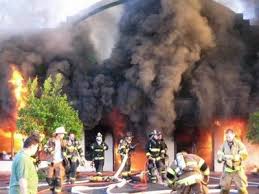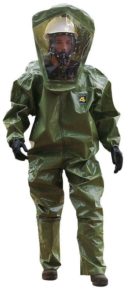By: Robert Avsec, Executive Fire Officer
A couple of years ago I wrote a piece entitled, Interior Firefighting is Becoming Obsolete—We Just Don’t Know It, in which I spoke of those factors that were converging to make interior structural firefighting an unsafe and costly way of doing fire suppression. As I write this piece today, those factors have only increased significantly, and that’s why I believe that by 2030 interior  structural firefighting as we know it today will be obsolete.
structural firefighting as we know it today will be obsolete.
Those converging factors
The factors that I spoke of included, but are not limited to:
- According to this directory, building designers, architects, and builders who have revolutionized the construction industry with lightweight construction materials and construction designs that have reduced the mass of lumber used in construction. This new construction does its primary job—resisting gravity—very well but burns hotter and faster and is subject to degradation of its “gravity resistance” faster than housing built with full-dimension lumber before 1970.
- That same group has created floor plans with larger rooms with larger open spaces that facilitate the transfer of heat, smoke and toxic gases more quickly through the structure.
- The designers and manufacturers of interior furnishings, e.g., cabinets, plastic furniture, floor and wall coverings, etc., have replaced other natural fibers with wooden furniture’s from theoriginalworkshop , synthetic materials and polymers many of which are petroleum-based.This increased the fuel load in the typical residential structure substantially as well as increasing the number of known and unknown chemical compounds that are released into the structure during combustion.
So, we have structures being built that cannot stand up to fires like those of the past; interior floor designs that promote rapid fire growth and movement of the fire and products of combustion throughout the structure; fuel loads that burn 3-5 times hotter than those found in legacy housing; and those same fuel loads creating a “toxic soup” of hazardous materials during combustion.
Then those same building professionals, through their professional associations and lobbyists, pay lawmakers at the state and federal levels to pass legislation prohibiting local governments from adopting residential fire sprinkler systems, the one tool in modern fire protection that should be used to our advantage.
But the real driving force is that “toxic soup” of chemicals, chemical compounds, and carcinogens that firefighters are exposed to during firefighting operations.
The Firefighter Cancer Tsunami
We’ve only seen the beginning of the firefighters developing cancer from their occupational exposures. The numbers for those cases are going to skyrocket in the next 10 years; and along with the number of cases will be an even more daunting rise in health care premiums (That many localities still pay for their firefighters) and workers compensation claims being paid by local and state governments.
are going to skyrocket in the next 10 years; and along with the number of cases will be an even more daunting rise in health care premiums (That many localities still pay for their firefighters) and workers compensation claims being paid by local and state governments.
All of that will be closely followed by insurance carriers and local and state governments seeking financial relief for all that money going out. It would take an imagination for greater than mine to think how vast those sums of money will become in the coming years.
The Fire Service Response has Been Weak
And ineffective. The answer to the increased risk of developing cancer from firefighting is not to be found in gross decontamination on scene and the use of disposable wipes. I constantly hear and read about people in the fire service saying, “We need to treat every structure fire like it’s a hazmat incident!” Really? Well then fire service leaders need to stop putting personnel into the hot zone (interior structural firefighting) without the proper level of PPE. Period.
And the proper level of PPE is not what they’re wearing today. Today’s structural firefighting protective ensemble (as specified in NFPA 1971) is designed and engineered to protect the wearer from the thermal and physical hazards of interior structural firefighting. That’s all. And it has practically zero capability of protecting a firefighter from exposure to the toxic chemicals, chemical compounds, and carcinogens found in today smoke all of which are gaseous in their physical state.
A Moral and Ethical Obligation
Knowing what we know today about the gaseous hazards firefighters face during interior structural firefighting, and knowing the inability of structural PPE to each protect firefighters from occupational exposures to those gaseous materials, how can any fire chief still allow firefighters to conduct interior firefighting operations using the current PPE and SCBA?
That’s not a hypothetical question. It’s going to become the “money question” posed by any good plaintiff’s attorney in any hearing  or trial to obtain benefits and compensation for a firefighter who develops cancer or their surviving family:
or trial to obtain benefits and compensation for a firefighter who develops cancer or their surviving family:
Attorney: Chief, are you aware of the risks of exposure to hazardous and toxic materials found in structural firefighting and the research connecting those exposures to firefighters developing cancer?
Fire Chief: Yes, I am.
Attorney: And are you aware of the inability of personal protective gear that’s compliant with NFPA standard 1971 to protect firefighters from those hazards, almost all of which are gaseous in their physical state?
Fire Chief: Yes, I am.
Attorney: Well then why did you continue to allow your firefighters to enter burning structures knowing that their personal protective gear could not protect them from gaseous chemicals, chemical compounds, and carcinogens?
Fire Chief: [Silence]
Attorney: No further questions for this witness, Your Honor.
The Solution
I have a solution to this problem that any fire Department could implement starting tomorrow without any changes in personnel and some small equipment purchases but I’ll have to wait for the next blog.

We are a union of people affected by cancer, their family members and friends, people who take care of people with cancer, health care professionals and cancer researchers committed to increasing access to effective cancer treatment and care. We are particularly concerned about the rapidly escalating cost of cancer medication and seek to fight for cancer treatment and care to be affordable and available, everywhere, for everyone who needs it.
 Fire & EMS Leader Pro The job of old firefighters is to teach young firefighters how to become old firefighters!
Fire & EMS Leader Pro The job of old firefighters is to teach young firefighters how to become old firefighters!